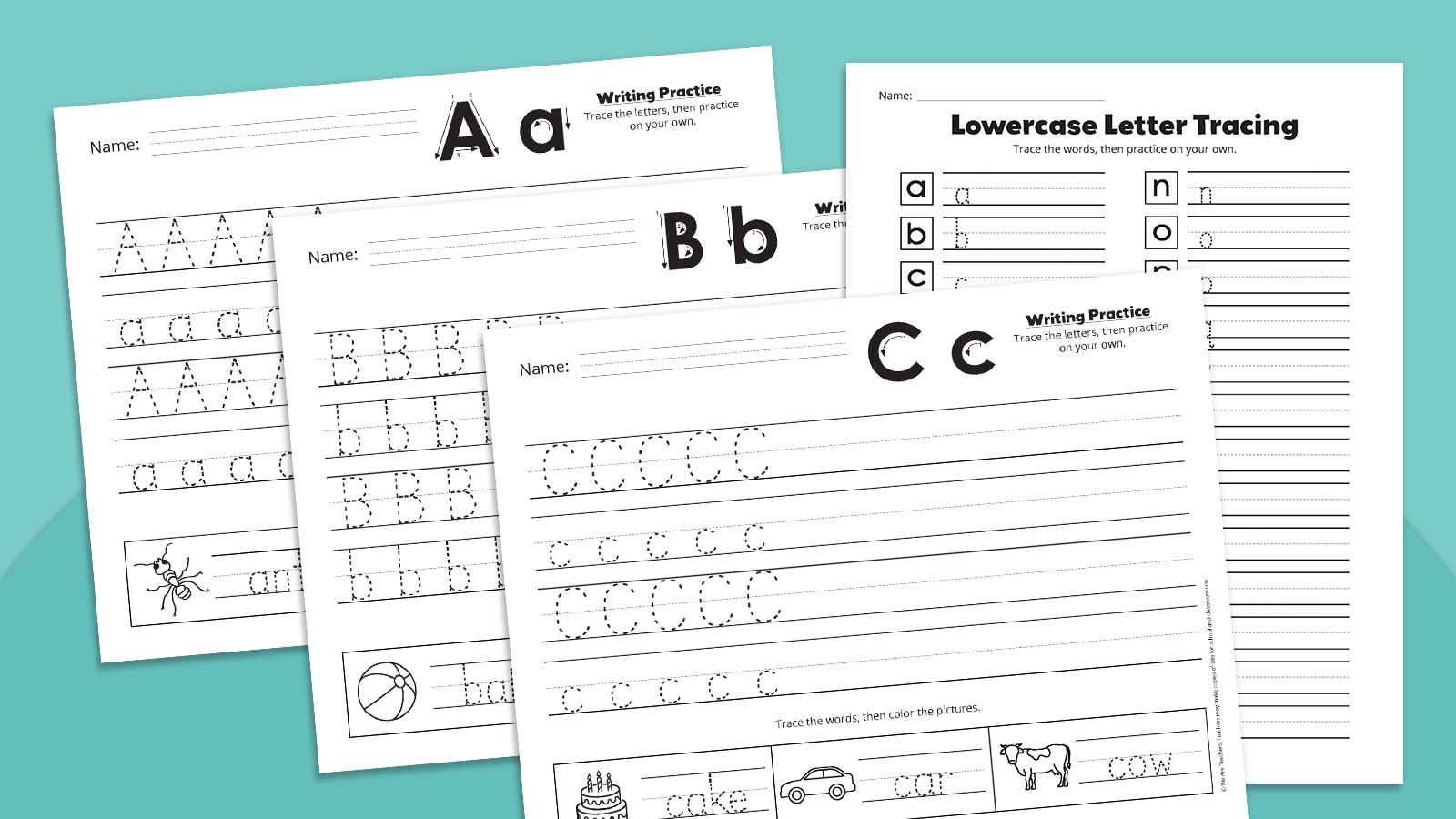Letters form the foundation of words, language, and, ultimately, the skills needed to read and write. That’s why ABC learning activities are so essential in the early years. To help, we’ve rounded up 36 fun and easy ABC activities for early learners to spark your lesson planning. With so many creative ways to practice, alphabet activities will be your students’ favorite part of the day.
1. Read alphabet books
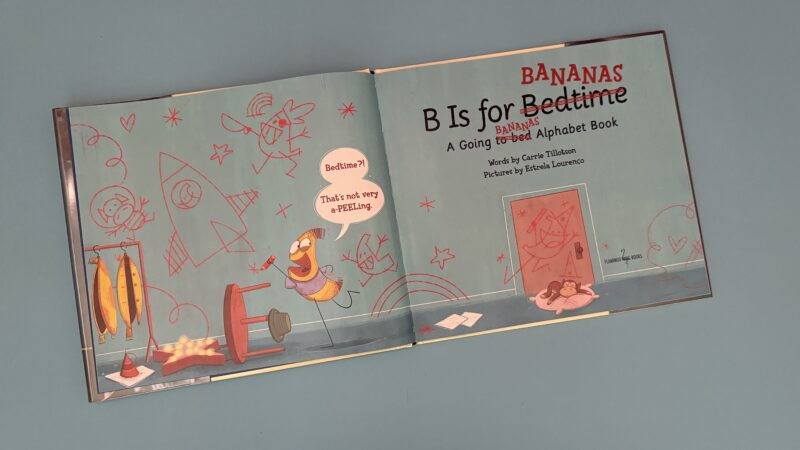
Always our number-one go-to, especially with little ones: Read, read, read! There are hundreds of books to choose from that explore the alphabet.
Try it: Best Alphabet Book for Kids
2. Play alphabet hide-and-seek
This is one of those preschool letter activities that are just plain fun for little ones. Fill a sensory bin with sand, rice, or cornmeal and hide plastic alphabet letters inside. Challenge students to pull a letter, identify its name and sound (out loud), and keep track of the letters they find on a whiteboard or piece of paper. This is good for independent work or a center activity.
3. Roll and match
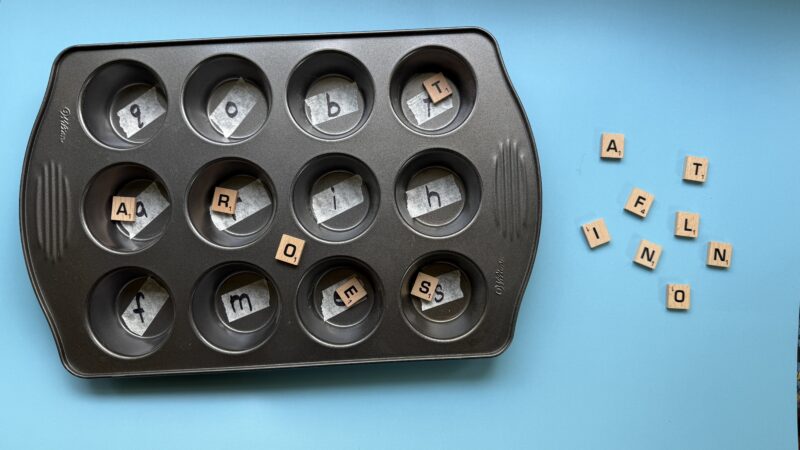
Help your students learn to match uppercase and lowercase letters with this fun activity. Label the bottom of a sectioned container (like a muffin tin or egg carton) with lowercase letters. Each container may have different letters. Partner students up and give each pair a bag of matching uppercase alphabet beads and tin. To play, players will take turns reaching into the bag, identifying the letter out loud, and placing it in the right section of the tin. When the first round is over, players can put all the beads back, shake up the bag, and play again.
4. Write letters on dried beans
Large dried white beans, like butter beans, are inexpensive to purchase and easy to write on. To prep for this activity, separate out piles of 52 beans into zipper plastic bags. On half of the beans, write all the uppercase letters. On the other half, write the lowercase letters. (This may be a good job for a classroom volunteer or to send home to parents who want to help.) When the sets are complete, use them to help students practice letter recognition by finding and matching the uppercase and lowercase letters.
5. Line up in alphabetical order
Give each student an 8 x 11 piece of card stock with one letter written on it. Call out the ABCs one at a time and have students line up in alphabetical order. For example, call out the letter A. Students will look at their cards and whoever has A will start the line. Next, call out the letter B. That student joins the line. Continue until you get to the end of the alphabet. Try this activity with both uppercase and lowercase letters.
6. Use alphabet-tracing strips
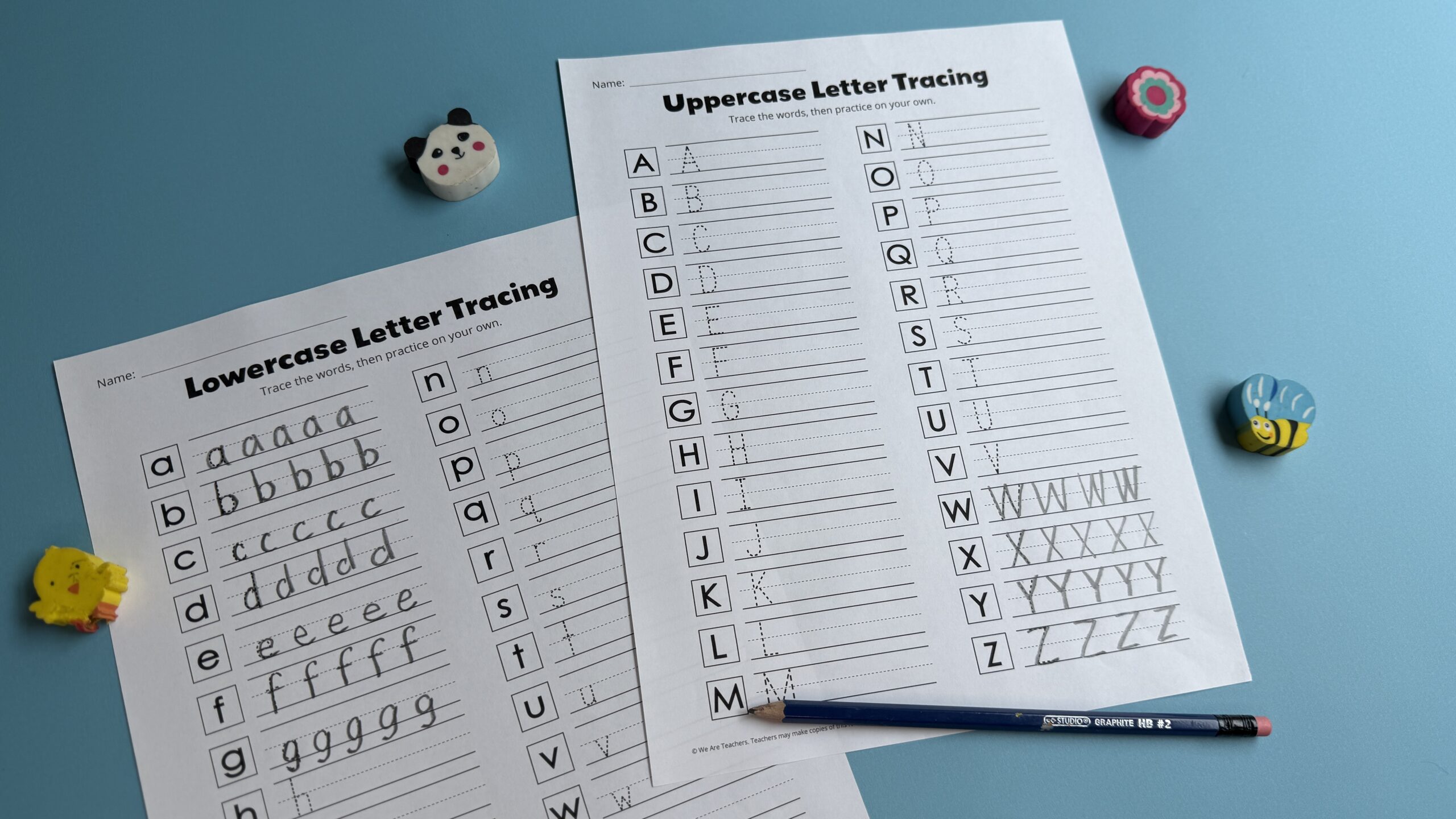
Teaching proper letter formation is absolutely key in the early grades. So if you’re a pre-K, kindergarten, or 1st grade teacher, our free bundle of letter-tracing worksheets is for you! Each letter-tracing worksheet shows the uppercase and lowercase letter with arrows showing how they should be formed. There are two lines of practice each for uppercase and lowercase. Each worksheet also has three simple words that start with each letter for students to trace, along with small pictures that they can color.
Try it: Free Letter-Tracing Worksheet Bundle
7. Go on a sticky note scavenger hunt
If, like many teachers, you teach one letter per week, this is a fun scavenger hunt–like activity to reinforce letter recognition. Each week, prepare a poster board by writing one letter (in uppercase and lowercase) at the top. Place the poster in an easily accessible place. Then, sometime when students are not in the room, hide sticky notes with the same letter on them—both versions. Whenever your students come across one of the sticky notes, they will be excited to add it to the poster.
8. Paint with cotton swabs
Help reinforce letter recognition with this fun activity that builds muscle memory. Give each student a piece of 8.5 x 11 card stock and have them write the letter you’re working on large enough to fill most of the card. Then, pull out the paint and cotton swabs. Students will have fun dipping the swabs in paint and dotting along the lines of the letter. Alternatively, you could use pencil erasers or (using your judgement) students could poke holes in the letter using pushpins.
9. Decorate outdoors with ABCs
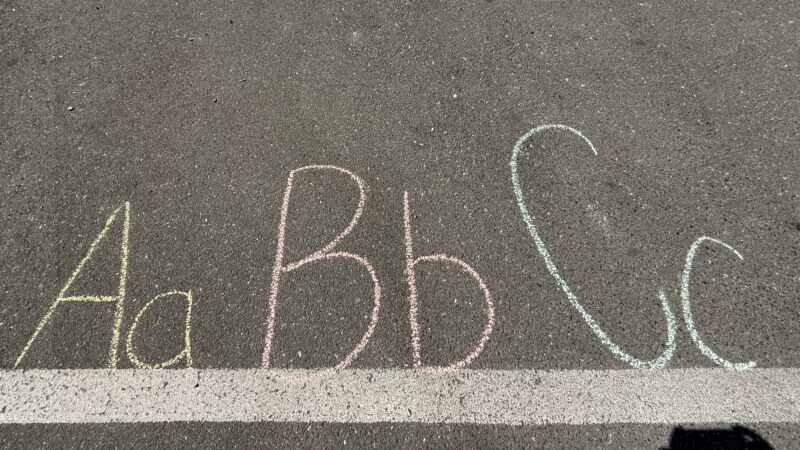
Kids can learn letters while beautifying the school’s sidewalks. Take your little ones outside and let them practice their letters by drawing them with sidewalk chalk. Make sure they have letter cards attached to an O-ring to work from.
10. String together alphabet beads
Letter recognition is the first step on the way to literacy. Help your students learn their letters with this fun bead-stringing activity. Students will need a pipe cleaner with the bottom curved up to keep beads from falling off and a bowl with large and small alphabet beads. To play, students will pick a bead, say the name and the sound of the letter out loud, then thread it onto their pipe cleaner. When the pipe cleaner is filled up, they can empty the beads back into the bowl. This is a fun activity to do with partners (great for taking turns) or small groups.
11. Write letters in shaving cream
Kids learn best when they use multiple senses, so they’ll love this super-fun, messy-in-a-clean way activity! Squirt shaving cream on a table or on each kid’s desk. Ask them to spread it around so it covers an area about the size of a 8.5 x 11 paper. Then, call out a letter and have them draw it in the cream with their pointer finger. Smooth out that letter to erase and start again. Bonus: Their hands and your table will be cleaner than ever! If the thought of doing this makes you squeamish, use cookie sheets or bins.
12. Serve up some alphabet soup
Teach kids letter recognition with this darling alphabet soup game. Divide students into groups of three or four. Give each student a spoon (like a wooden compostable or a plastic one). Give each group a bowl of plastic alphabet letters. Taking turns dipping their spoon into the “soup,” students will search for the letters in their name or simple words like cat, dog, go, etc.
13. Bend letters with pipe cleaners
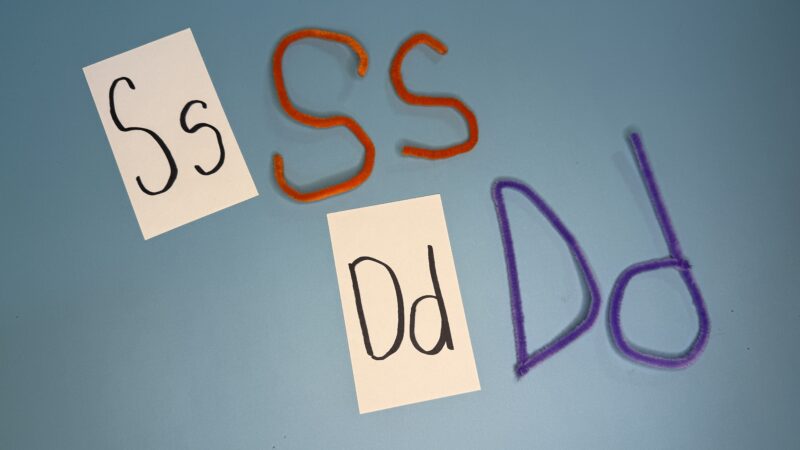
Pipe cleaners are a classic choice for fine motor practice as well as a go-to craft resource. One fun use for them is to practice forming letters. Give each student a long pipe cleaner. Then, call out a letter and say uppercase or lowercase, and challenge students to create that letter with their pipe cleaner. Once they think they’ve got it, have them hold it up for approval. Alternately, use this as an independent center activity with pipe cleaners and alphabet cards. Students will pull one card at a time, then make that letter with their pipe cleaner. If you’d like, have them keep track on a tracking sheet.
14. Use an ABC floor mat
Invest in an inexpensive interlocking foam alphabet floor mat for your classroom, and use it for various alphabet activities. Kids can get down on hands and knees and practice tracing each letter with their finger. Or do a little one-on-one with a student and have them hop to the letters you call out.
15. Conjure up invisible letters with watercolors
This is a classic activity that kids really get a kick out of. Using a white crayon, draw letters on pieces of white paper. Give each of your students a sheet and a set of watercolors. As they paint over the (nearly invisible) crayon marks, letters will magically appear.
16. Play musical alphabet
Set up letters in a big circle on the floor. You can use magnetic letters or just write them on index cards. Then have students sit in a circle around the letters. Play some music and have one child walk around the circle. When the music stops, have that child tell you the name of the closest letter. Expand on it: Ask the child to name three things (colors, animals, etc.) that start with that letter. Continue until all students have a turn.
17. Soak up the alphabet
Cut sponges into the shapes of letters. Students can use them at the water table. Or they can dip them in paint and make prints of different letters on newsprint or scrap paper.
18. Put together name puzzles

On colored index cards, write each student’s name. Cut the card into pieces (one letter per piece) using a simple zigzag pattern. Put each name in a zipper plastic bag. Pass out the bags and have students dump out the pieces and put their name puzzle back together. Once they’ve done their own a few times, let them trade with friends to practice more.
19. Make letters from nature
Take your students on a nature walk and discover the alphabet right outside your door. Have students collect natural objects like sticks, leaves, grass, and small rocks. Next, have them use their collection to practice making letters on the sidewalk or blacktop. Another fun activity: Have students find a sturdy stick. Take the class to a patchy dirt spot and have them practice writing letters in the dirt.
20. Use your noodle
We know from Alphabet Soup that eating your ABCs is plain-old fun. So think of all the alphabet activities you can do with food. One fun idea is to boil a box of fettuccine noodles Drain and spray the noodles lightly with oil so they don’t stick together. Let them cool, then bring them to school in a pot or bag. Give each kid a few strands and challenge them to practice making letters and spelling words with them.
21. Make your own ABC book
Personalizing the ABCs helps kids process and retain their learning. One of our favorite alphabet activities starts by creating books together out of 26 half pages of paper stapled together or hole-punched and held together with yarn. This activity will take many sessions to complete all the steps. To begin, guide students to write each letter on its own page—uppercase and lowercase. Once each page has its letter, they can illustrate each page with things that begin with that letter. Or if you’d like, kids can cut pictures out of magazines and glue them into their book. Working on their illustrations can be a literacy-time, fast-finisher, or time-filler activity.
22. Use alphabet beads
Using pipe cleaners to string alphabet beads isn’t the only way to learn letters. Assemble a “seek and find” bottle. Have an alphabet battle. Experiment with fizzing letter cubes. Get the details on these ideas and more alphabet activities with our article linked below.
Try it: Awesome Ways To Use Alphabet Beads for Learning
23. Stamp letters in play dough
Alphabet activities using play dough are both tactile and great for practicing pre-reading skills. For this hands-on activity, give each student a blob of play dough and have them roll or push it into a flat circle on their desk. Using letter stampers (easily found online or at teacher supply stores), have them stamp letters and words right into the dough. They can use an alphabet chart or letter cards as a guide.
24. Make ABC sensory bags
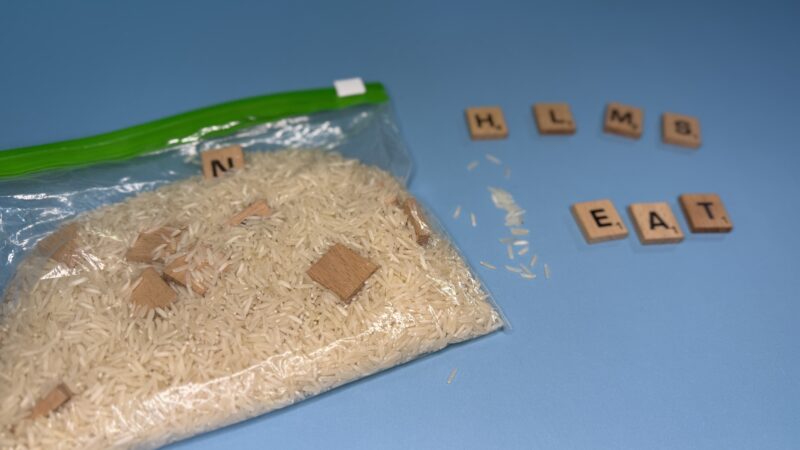
This one is great because you can change up what you put in the bags and even move to sight words. You’ll need a gallon bag with a ziplock top. Add letters written on pieces of paper, magnetic letters, Scrabble tiles, or anything else you can think of that has letters. Then fill the bag with oatmeal or small beans and seal it. Kids will dig through the bag searching for letters. When they find one, they can pull it out and record that letter on a record sheet. Have kids play until they find all 26 letters of the alphabet.
25. Make tactile letter cards
Another fun way to practice making the connection to letters is to create tactile letter cards. Make or print out cards with bubble letters on them. Students will take a card, then fill in their letter with washable glue. Next, they will stick rice, lentils, pom-poms, beads, or any other small items you can think of into the glue. Put cards aside to dry and display them the next day.
26. Study a letter of the week
Many pre-K and kindergarten classes do a letter of the week, and for good reason. Teaching instant recognition of letters and practicing writing them is so important for learning to read. Doing alphabet activities for one letter each week reinforces knowledge and recollection.
27. Use snap cubes
Build those fine-motor skills and letter recognition at the same time with our snap block alphabet printable. Featuring both uppercase and lowercase alphabets, they’re all yours to download and print. Print out a full snap and put it together in a loose-leaf binder. Kids can pull out the book and cubes at center time or as a fast-finisher alphabet activity.
Get it: Snap Block Alphabet Printable
28. Trace letters in spices
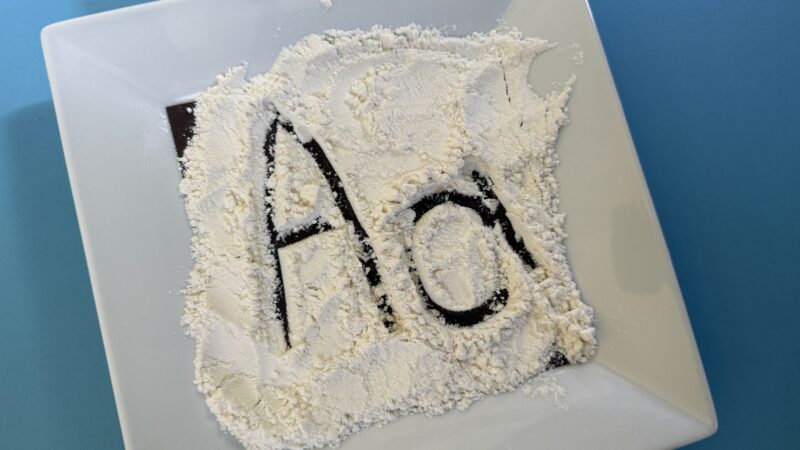
This one combines touch, smell, and sight. It gives you an opportunity to talk about what we use spices for as well. In a tray or on a paper plate, sprinkle a covering of a spice such as cinnamon, salt, pepper, basil, etc. Perhaps have a selection on hand and let each student choose which one they’d like to work with. Once they get their plate, they can practice writing letters using letter cards or an alphabet chart to guide them.
29. Sing songs about the alphabet
Everyone loves to sing “The Alphabet Song, but did you know there are lots of other versions? Search on YouTube for kids’ alphabet songs and start a sing-along. (Be sure to screen the songs before sharing with your students!)
30. Use letters as drawing inspiration
Letters of the alphabet are a great starting point for creative drawings. Have students choose a letter, for example capital A. Then challenge them to create a drawing of a person or animal using the outline of the letter as a starting place. Google “how to draw alphabet people” for inspiration.
31. Highlight letters on a page
Print out pages of text or have a stack of kid-appropriate magazines on hand. Give each student a highlighter and have them go on a letter hunt, highlighting a particular letter every place they find it. This activity is also great for sight word recognition.
32. Watch alphabet videos
Take a trip to Sesame Street. Watch an animated version of Chicka Chicka Boom Boom. Do the alphabet dance.
Try it: Best Alphabet Videos for Kids
33. Play letter slap
This is a great partner game. Give each pair of students a shuffled deck of alphabet cards. Have them deal out the cards equally. The game begins and each player takes their top card and turns it over. The player with the letter closest to A wins the hand and takes the card and adds it to their hand. If two of the same letter are played, the players (gently) slap the card. The one on the bottom of the slap wins the hand. The game ends when one player holds all the cards. To make it more challenging, shuffle two decks together and play as above.
34. Go on a classroom alphabet scavenger hunt
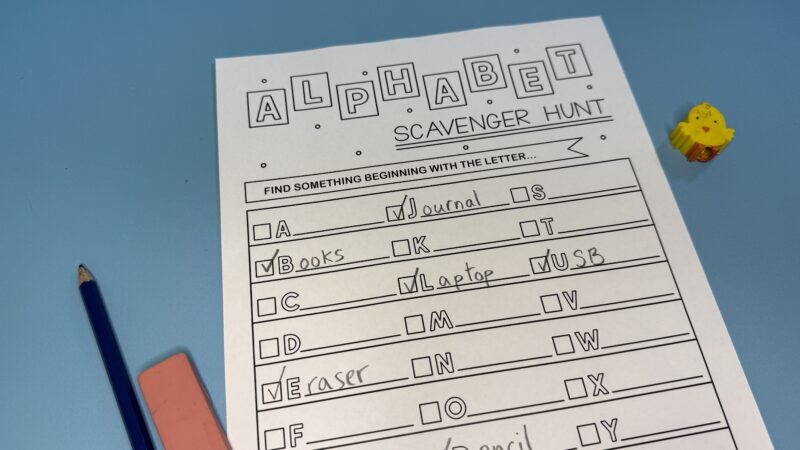
Before the game begins, give each student a checklist with each letter of the alphabet on it. Then challenge them to find one object in the classroom that starts with each letter of the alphabet. Students can pair up to make the activity even more fun. Allow each student to have three “passes” for hard-to-find letters like X and Q. For extra fun, venture out into other areas of the school for another alphabet scavenger hunt.
35. Match plastic egg letters
Everyone seems to have plastic Easter eggs hanging around. To prepare this activity, use a Sharpie or letter stickers to mark an uppercase letter on one half of each egg and a lowercase letter on the other. Then separate each egg into two and throw them all in a basket. The object of the game is to pull out two halves and try to make a match. Tip: Add difficulty by using different-colored eggs.
36. Create loose-part letters
Loose parts are exactly what they sound like—a collection of loose materials or objects. These can be small pebbles, bottle caps, random LEGO bricks, seeds, keys—anything. Draw big letters on a piece of paper and have kids line up loose parts on their table or desk to form the letter.
Recognizing letters is a fundamental part of learning how to read. Without it, children struggle to learn letter sounds and identify words. Beginning readers who know their alphabet have a much easier time learning to read. Making alphabet practice activities part of every day in fun ways helps create a lifelong love for letters and words.
Get my worksheets!
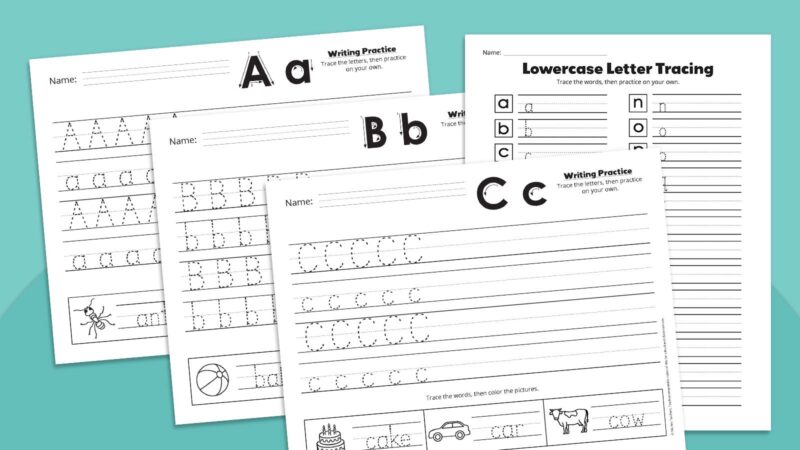
Ready to incorporate the ABCs in your classroom or at home? Grab our printable letter-tracing worksheets by filling out the form on this page.



